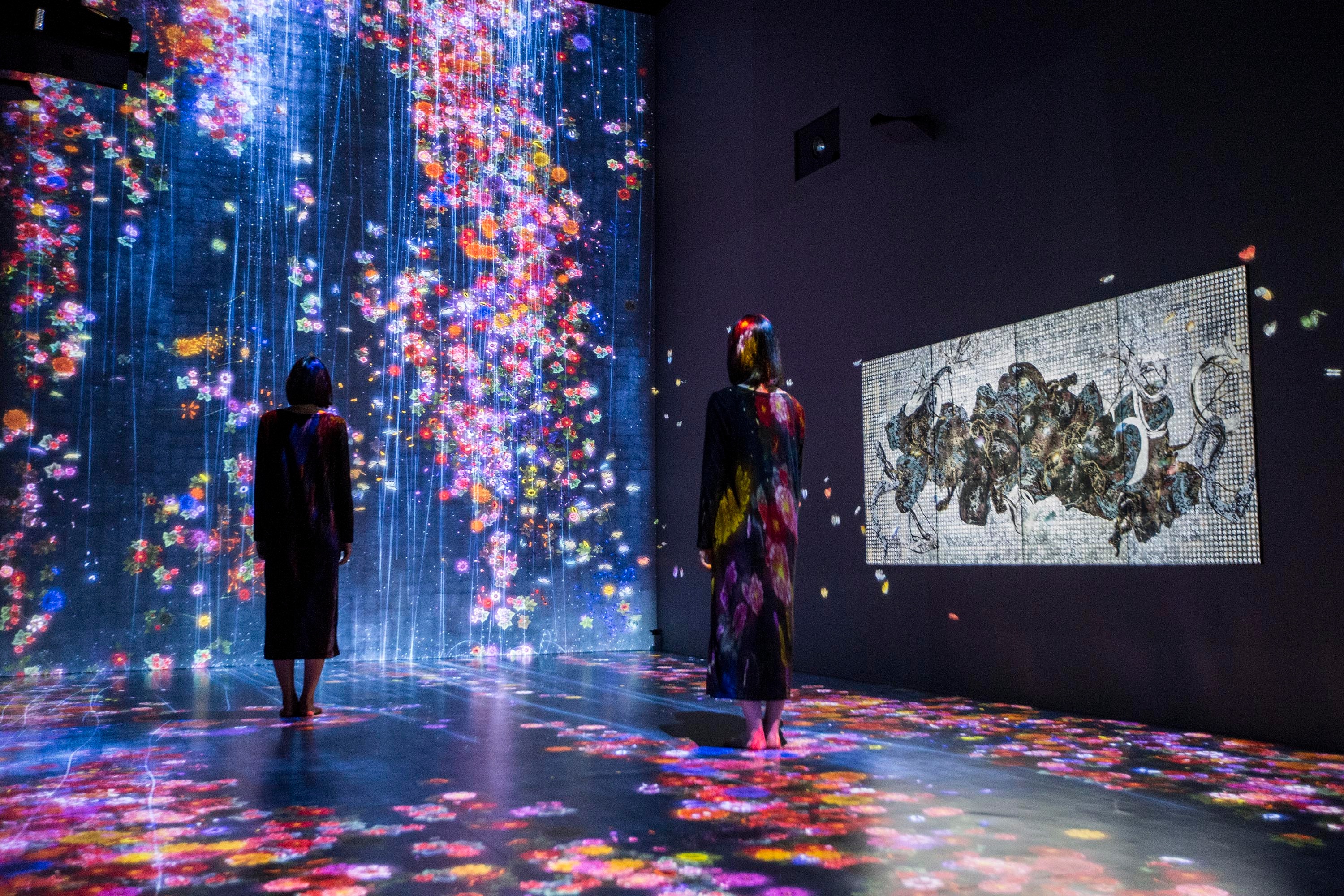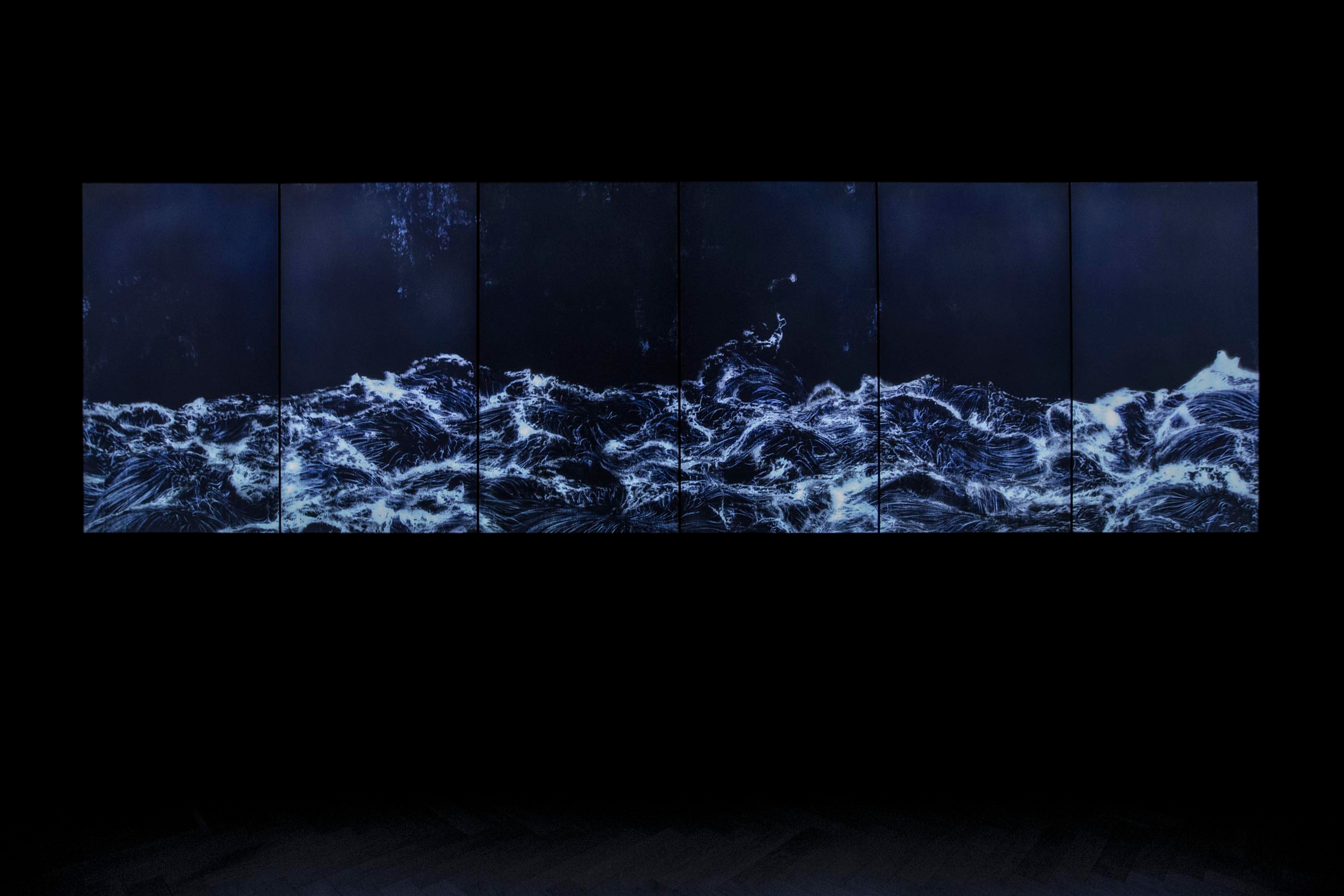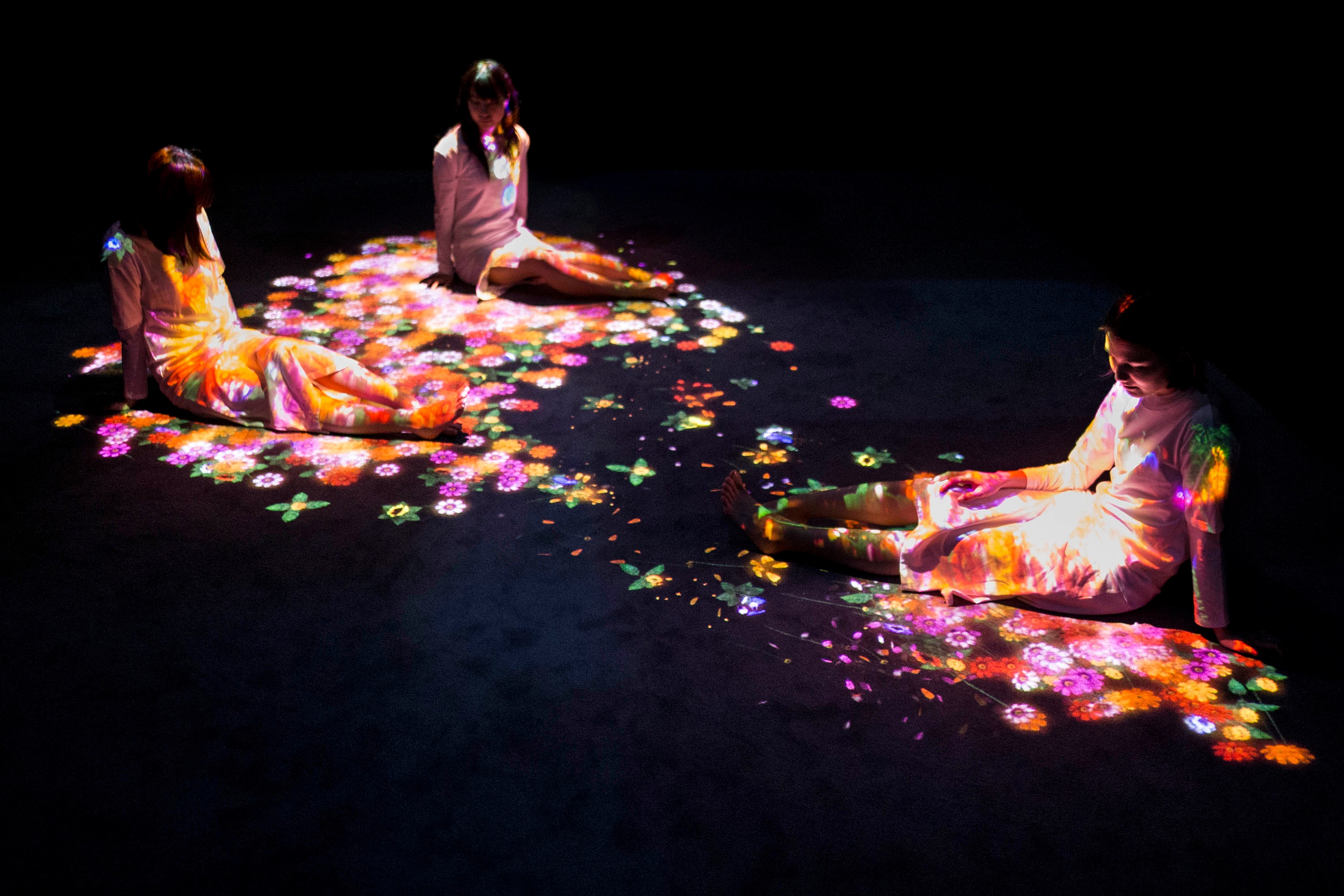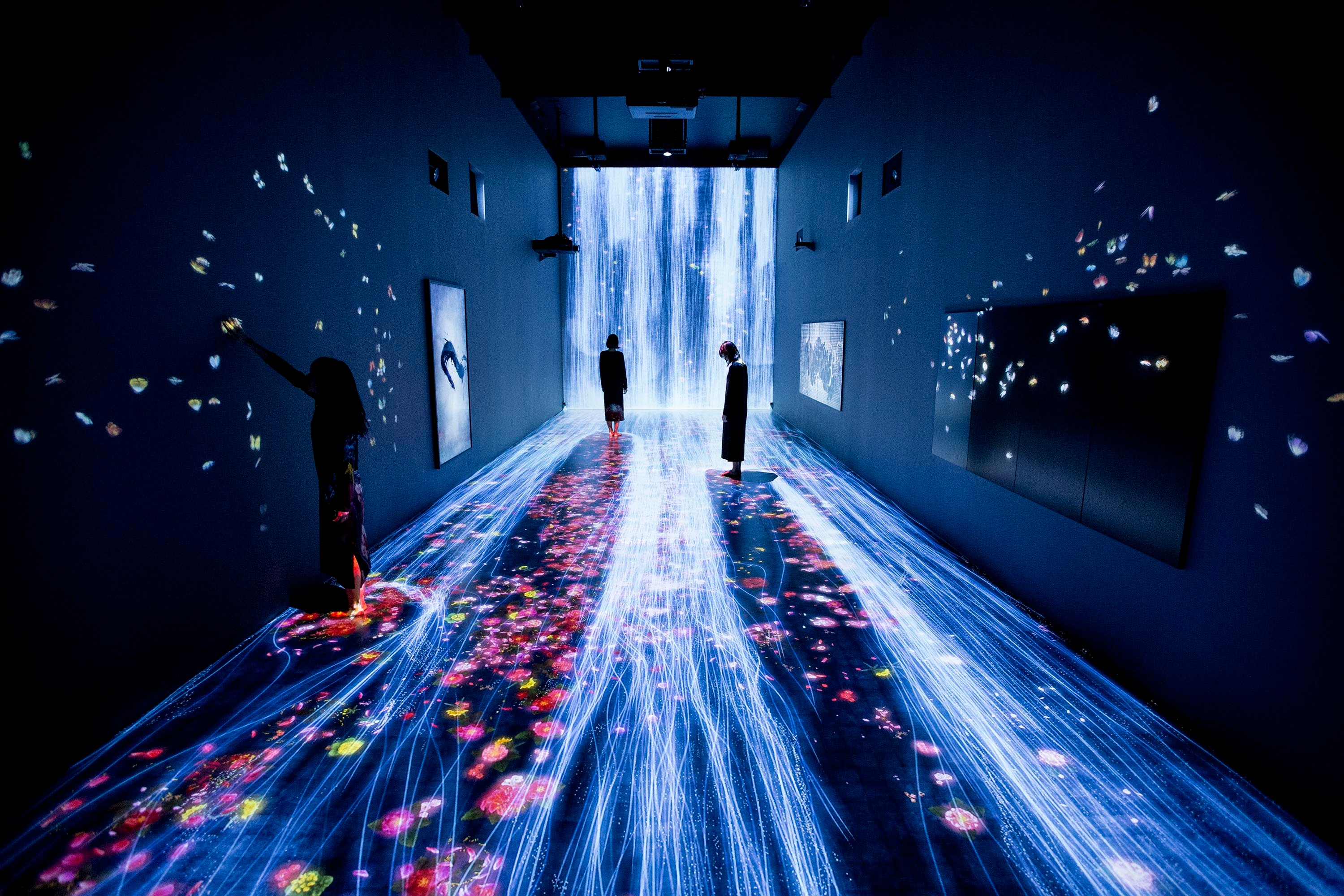Spotlight on: Japanese art collective teamLab
 Installation view of teamLab: Transcending Boundaries (1)
Installation view of teamLab: Transcending Boundaries (1)
 Dark Waves (2)
Dark Waves (2)
 Flowers Bloom on People (3)
Flowers Bloom on People (3)
The Japanese art collective teamLab have been creating a stir with their current exhibition at Pace London , “teamLab: Transcending Boundaries”. Below is a short summary of an interview we conducted with teamLab founder Toshiyuki Inoko.
Can you give us a short background about teamLab? How did the collective initially form?
In 2001 I founded teamLab with several of my friends, as a space of co-creation. It was the year we graduated from the university, and most of the initial members were programmers, designers and engineers. We were creating art installations from the beginning, but we had neither the opportunities to present them, nor could we imagine how to economically sustain our teams producing art. On the other hand, we believed in the power of digital technology and creativity, and we simply loved it. We just wanted to keep creating something new, no matter which genre it would turn out to be. And while we took part in various projects to maintain teamLab, we increased the number of technologists such as architects, CG animaters, painters, mathematicians and hardware engineers.
The exhibition “teamLab: Transcending Boundaries” features immersive installations, many of which have never been seen before. Can you tell us about them?
For this exhibition, as we named it “teamLab: Transcending Boundaries”, we intended to extend this concept and transcend boundaries not only between artworks and viewers, but also between artworks, uniting a group of individual pieces into one immersive experience.
In the mind, there are no boundaries between ideas and concepts, they are inherently ambiguous and influence and interact with each other. In order for ideas and concepts to be expressed in the real world it is necessary to have a physical material substance through which they are mediated. Boundaries are created when ideas and concepts are materialized in the real world.
Within the digital domain, art is able to transcend physical and conceptual boundaries. Digital technology allows art to break free from the frame and go beyond the boundaries that separate one work from another. Elements from one work can fluidly interact with and influence elements of the other works exhibited in the same space. In this way, the boundaries between art pieces dissolve.
(For details about the works on display, please click here.)
Why did you choose London to reveal these new pieces?
 Although the nature of the works does not depend on where we exhibit them, it was significant that Pace gave us an opportunity to show these pieces. “Transcending Boundaries” has been one of our key concepts. For this exhibition, we intended to extend this concept and transcend boundaries not only between artworks and viewers, but also between artworks, uniting a group of individual pieces into one immersive experience. (Photograph is Installation view of teamLab: Transcending Boundaries (1))
Although the nature of the works does not depend on where we exhibit them, it was significant that Pace gave us an opportunity to show these pieces. “Transcending Boundaries” has been one of our key concepts. For this exhibition, we intended to extend this concept and transcend boundaries not only between artworks and viewers, but also between artworks, uniting a group of individual pieces into one immersive experience. (Photograph is Installation view of teamLab: Transcending Boundaries (1))
This is a very challenging experiment technically and conceptually - by collaborating with Pace, a new possibility for trying has been opened, one that occurs more positively and is capable of more experimentation, not just for works of art, but for the way that art spaces exist, for the approach of the viewer, and even for the art market.
How has the reception been from the British visitors?
It seems like we have received very positive reaction from the audience and thankfully, the tickets were fully booked by the second day after opening. Moreover, the exhibition has been covered by a number of media, including UK Vogue, Elle UK, TimeOut, amongst others.
Have you been inspired or influenced by the UK in your work in any way?
We don’t take into consideration the geographical location when producing works. We want to explore what a human being is, and what the world for a human being is. In other words, we’re interested in human beings. Of course, we have to take into consideration exhibit space, because there are physical constraints. Also, we curate the exhibition collaboratively with museums and curators, taking geographical location into account. Eventually, we’re so glad that we managed to be able to hold an exhibition in London, a city with a strong commitment to and interest in creating new societies for the future.
What kind of collaboration or events would you like to do in the UK in the future?
We would love to organize an exhibition anytime we are called for. Especially, we intend to create large-scale works with the eventual aim of creating a teamLab amusement park where visitors can be immersed in large-scale art. By harnessing the power of digital art to change the relationship between people inhabiting the same space, we hope to someday expand the scope of the work all the way to the scale of a whole city in order to change the relationship between city residents. Therefore, we would love to be able to construct an entirely new city.
Photographs © teamLab, courtesy Pace Gallery
(1) Installation view of teamLab: Transcending Boundaries, January 25 – March 11 2017
(2) Dark Waves, 2016, digital work, 8 channels, continuous loop
(3) Flowers Bloom on People, 2017, digitized nature, endless
